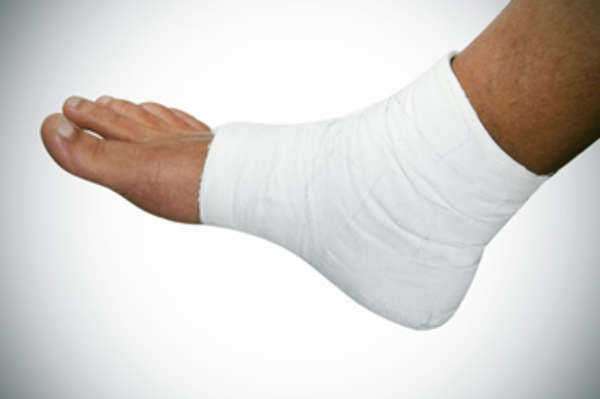
Introduction
Workplace injuries can be devastating for both employees and employers alike. They can result in medical expenses, time off work, lost productivity, and even death. According to the Occupational Safety and Health Administration (OSHA), approximately 4,700 workers are killed on the job every year in the United States alone. Additionally, millions of workers suffer from non-fatal injuries every year. Therefore, it is important for employers and employees alike to understand what workplace injuries are, how to prevent them, and what to do if they occur.
What is a Workplace Injury?
A workplace injury is any injury that occurs while an employee is working. This can include injuries that occur on the job site, as well as injuries that occur while an employee is traveling for work-related purposes. Workplace injuries can range from minor injuries like cuts and bruises to more serious injuries like broken bones, burns, and even fatalities.
Understanding the Causes of Workplace Injuries
There are many different factors that can contribute to workplace injuries. Some of the common causes include:
1. Unsafe Work Conditions
Unsafe work conditions are one of the leading causes of workplace injuries. This can include factors like poor lighting, slippery floors, inadequate training, and lack of proper safety equipment.
2. Overexertion
Overexertion is another common cause of workplace injuries. This can occur when employees engage in manual labor tasks that require heavy lifting, pushing, or pulling.
3. Slip and Fall Accidents
Slip and fall accidents are very common in many workplaces. These types of accidents can occur when employees step on slippery or wet surfaces, trip over cords or other objects, or fall from an elevated surface.
4. Equipment Malfunction
Equipment malfunction is another potential cause of workplace injuries. This can occur when machinery or tools fail to function properly, resulting in employee injuries.
5. Workplace Violence
Workplace violence is a growing concern in many workplaces. This can include physical violence, verbal abuse, or harassment.
Preventing Workplace Injuries
Preventing workplace injuries should be a top priority for all employers. Some of the ways that employers can help prevent workplace injuries include:
1. Proper Employee Training
Proper employee training is essential for preventing workplace injuries. Employers should provide comprehensive training that covers safety procedures, equipment operation, and emergency response.
2. Regular Maintenance and Safety Inspections
Regular maintenance and safety inspections can help identify potential hazards before they cause injuries. Employers should conduct inspections on a regular basis to identify any safety hazards and take the necessary steps to address them.
3. Provide Safety Equipment
Employers should provide employees with the necessary safety equipment. This can include items like hard hats, safety goggles, earplugs, and gloves.
4. Encourage Open Communication
Employers should encourage open communication between employees and management. This can help identify potential safety hazards and address them before they cause injuries.
5. Implement a Safety Program
Implementing a comprehensive safety program can help prevent workplace injuries. A safety program should include policies and procedures for identifying and addressing safety hazards, as well as training and education programs to help employees stay safe on the job.
What to Do if You are Injured at Work
If you are injured at work, it is important to take the proper steps to ensure that you receive the care and compensation that you are entitled to.
1. Seek Medical Attention
If you are injured on the job, seek medical attention immediately. Even if the injury seems minor, it is important to have a medical professional examine you to ensure that the injury is not more serious than it appears.
2. Report the Injury to Your Employer
Report the injury to your employer as soon as possible. This will allow your employer to take the necessary steps to ensure that you receive the care and compensation that you are entitled to.
3. File a Workers’ Compensation Claim
File a workers’ compensation claim with your employer or workers’ compensation carrier. This will allow you to receive compensation for medical expenses and lost wages.
4. Contact an Attorney
If you are having difficulty receiving the compensation you are entitled to, contact an attorney who specializes in workers’ compensation claims. A knowledgeable attorney can help you navigate the legal process and ensure that you receive the compensation that you deserve.
Conclusion
In conclusion, workplace injuries are a serious concern for employers and employees alike. While it is impossible to completely eliminate the risk of workplace injuries, there are steps that employers can take to help prevent them. Additionally, employees who are injured on the job should take the necessary steps to ensure that they receive the care and compensation that they are entitled to. By working together, employers and employees can help ensure that workplaces remain safe and injury-free.
Injuries that occur in the work place may sometimes be considered asgrounds for compensation for the injured party. Work place injuries are defined as those that occur to a particular person while at the location of work and occurs through no fault of his/her own.
All workplace injuries that occur should be reported to the appropriate department or management, for failure to do so may affect the possibility for compensation through litigation. Injuries that occur in the work place are often difficult cases to endure on various levels, which will depend on the extent of the injury in most cases.
Furthermore, laws implemented at the state level will also determinewhat work place injuries are and how they can be considered forpossible compensation through a lawsuit. It is important to consult anattorney or lawyer in the matter in order to determine whether or not alawsuit is possible.

















